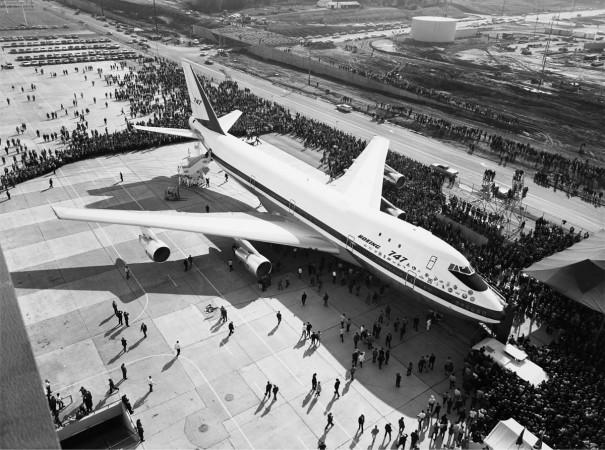
They say all good things come to an end, beautiful things sooner than most. And the Boeing 747 'Jumbo Jet' is arguably one of the most beautiful things ever to lift off the face of the Earth. She's not beautiful in a sultry 'come hither' way, rather in a manner that defies words: slightly odd-shaped, but powerful and safe; like a nanny that's been around you for decades.
United Airlines' recent announcement that they would be retiring the last of their 747s later this year signaled the end; the beginning of which arrived a long time ago.
Boeing followed up by stating that should no new orders arise (an increasingly likely scenario) they will call time on production of an aircraft that made the company a household name.
Having flown in 747s of various varieties (Classic, 300 Combi, and the 400) for the last few decades, and even had the pleasure of working on a few in an engineering sense, there is a brooding sense of loss.
The joy, as a young boy, of watching the giants land at Heathrow through the double-glazed windows of the Skyways Hotel in the early '80s has never been matched.
Even the A380 hasn't inspired the feeling of awe I got the first time I walked down the tarmac to the waiting behemoth, tugging at my mother's hand, beseeching her to walk faster so we could get closer... sooner. There she was, glinting in an early evening sun; it's one of my earliest memories, and also my most vivid.
And then, of course, there was the upper deck – "stairs in a plane!" – that lofty haven for the business and first class. Above the plebs, higher in the clouds than everyone else. Towering even at 40,000 feet.
The only other aircraft, apart from the 747, that have sent tingles down my spine have been the rough and ready, bums on the flame, Mig-21; and the F-14 Tomcat, the swing-wing wonder made all the more thrilling by the fact that it was flown by Tom Cruise and Val Kilmer in Top Gun.
But while the Fishbed and the Tomcat had the power and growl to demand your attention, the 747 just stood there. You looked at it, then cocked your head to the side and looked again – nope still looks odd.
Those four engines idly rotating on the apron seemed to speak a language all of their own. They could've said anything, but it didn't matter, it was the sound of them speaking that did. Like an airborne Sean Connery or Richard Burton.
Boeing may stop manufacturing the Jumbo, but that doesn't mean it's going to disappear from the skies. The Third World will still use this work-horse, with its exceptional safety record, to ferry lives across oceans and continents. People visiting air and space museums will still marvel at its shape and wonder how on earth they got it off the ground. It will be there whenever you care to look.
Over the next few decades, its stature may decline as a generation emerges more in tune with the hi-tech hum of the Airbus family, and Boeing's new line-up. But like a beloved curio that was wrapped up and stored in a closet for years, when you see it on that rare occasion, you will know just why you were in love with it for so long and with such intensity.
The Boeing 747 was inspired by vision, kept aloft by ingenuity, and adored by dreamers.
For those of us she transported to loves and lives across continents; for those of us she deigned to show her beating heart underneath the cowlings and panels; for those of us who grew up with her: She's the very essence of a glittering moonbeam reflecting off the clouds as you fly above them.
Farewell for now old friend, and we'll always look for your contrails as you make your endless journeys, passing over us like an angel with metallic wings.








